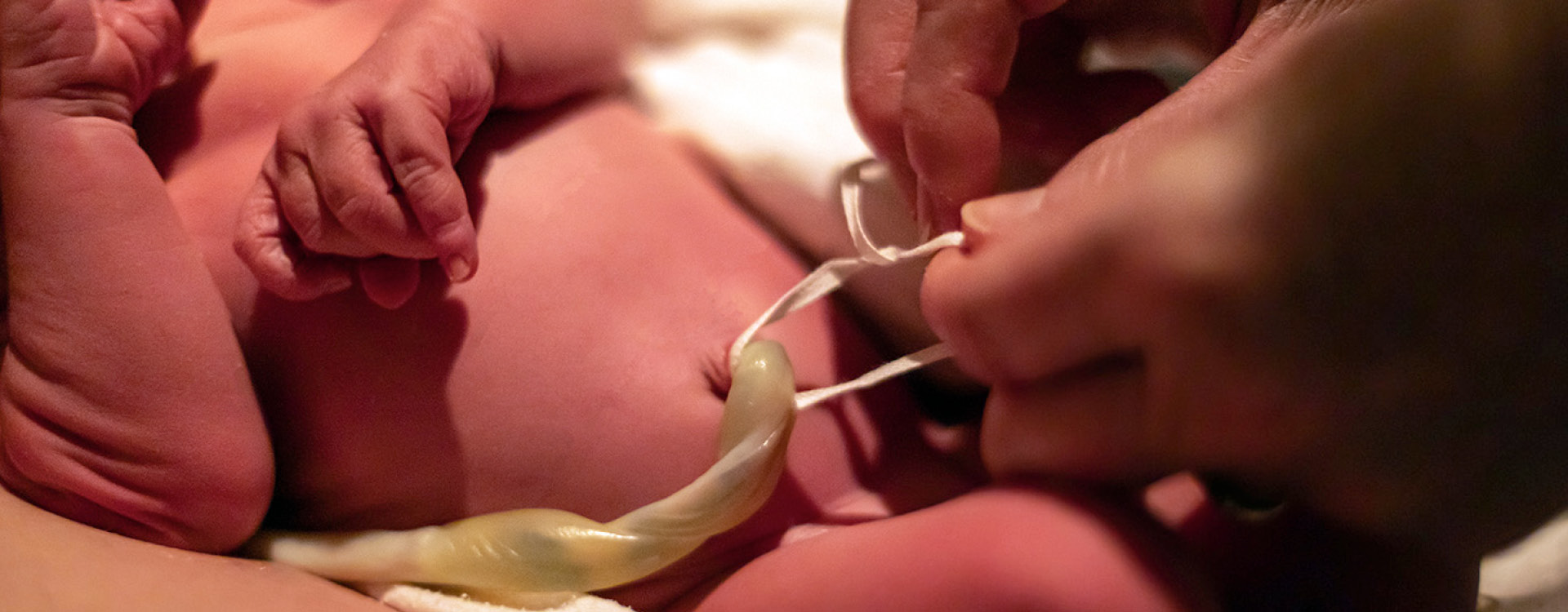For women in their final, uncomfortable weeks of pregnancy, the delivery day can’t come soon enough.
The Internet is chock full of ideas to get the ball rolling. Some of these ideas — like regular exercise (including walking) — have research to back them up. But a lot of the ideas floating around in the pregnancy blogs (spicy foods, hot baths, enemas…) are old wives' tales with nothing to support them but anecdotal evidence.
Curb walking to induce labor falls into the anecdotal category, but it may be worth a try.
What Is Curb Walking?
Curb walking is walking with one foot on the curb and the other on the road, in an uneven gait that forces you to shift your weight from side to side. Some believe it can help induce labor naturally.
Proponents of curb walking to induce labor claim the shifting of baby’s weight from side to side can help your pelvis open and your baby’s head to descend further down towards the birth canal. With the baby’s head positioned deeper in the pelvis, there is more pressure on the cervix, which can cause dilation and effacement, precursors to labor.
Does Curb Walking Help Induce Labor?
During the last weeks of pregnancy, your body and your baby prepare for birth. The baby drops down into the pelvis and the cervix tilts forward and gradually begins to soften. Over a matter of a few days or a few weeks, you may experience irregular contractions that help your cervix gradually thin and perhaps even dilate a few centimeters.
There’s no scientific evidence to support the notion that curb walking initiates or accelerates this natural process, or that having the baby’s head deeper into the pelvis triggers labor, but curb walking (and walking in general) can help the baby to move into a better birthing position.
It’s important to note that it’s not really up to the mother to induce labor — evidence suggests that in a healthy pregnancy, it starts with the baby.
The exact causes of labor are unknown but researchers now believe that when a baby is ready for life outside its mother's uterus, its body releases a tiny amount of a substance that signals the mother's hormones to begin labor [*]. This means that spontaneous labor will begin only when both your body and your baby are ready [*].
How to Curb Walk
In a recent study of at-home labor-inducing methods, the majority of women who achieved spontaneous labor did not remember a specific trigger that induced their labor. Among the percentage that did cite a specific non-clinical trigger, walking or exercise was most frequently cited [*].
But curb walking to induce labor is not the same as regular walking in the sense of sustaining a heart rate for a period of time. You’ll want to do it slowly and carefully — especially when you can’t see the curb with your baby bump — and try not to fatigue yourself. Here’s how:
- Wear comfortable, low, walking or athletic shoes.
- Begin standing on the ground next to the curb.
- Place the foot closest to the curb on the curb and begin walking, keeping your other foot on the ground (it’s not a tightrope exercise!).
- After 5 minutes, turn around and place the other foot on the curb and walk for 5 minutes on that side.
- If you experience pain or discomfort on either side, skip one or both.
10 minutes a day is enough; You’ll want to save your energy for labor.
Curb Walking Alternatives
If you don’t have curbs or don't want to go outside, you can do this around the house:
- Walk with one foot in a shoe with a thick sole (not a high heel) and the other barefoot for a short time;
- Shift your weight from side to side by stepping up on a yoga block placed on its flat side with the other foot on the floor;
- Walk up or down stairs sideways, carefully;
- If you can tolerate it, try a few lunges.
When to Curb Walk
Curb walking (or an equivalent) may be done at or near term, but keep in mind that due dates are only estimates and can be off by several weeks! Even among women who ovulate precisely and have a 28-day cycle, studies have shown a 5-week span in variability from an expected due date [*].
Reasons Not to Curb Walk
The muscles of the pelvic floor can weaken with pregnancy, and for many women, so do the abdominal muscles. If you’re already experiencing back pain or abdominal coning, you don’t want to exacerbate the problem. If curb walking to induce labor causes you pain or you feel particularly unstable doing it, don’t continue. Other contraindications for curb walking include:
- If you aren’t full term;
- If your baby is in an abnormal position such as breech, with its feet towards the birth canal;
- If you have a placenta disorder such as placenta previa or abruption;
- If you have a complication such as cord prolapse or preeclampsia;
- If you have an infection;
- If you are having issues with your balance;
- If your care team tells you not to.
What Week Should I Start Curb Walking?
An ultrasound that's used to determine due dates during the first 20 weeks of pregnancy is accurate only within 7 days. Ultrasounds done from 20 to 30 weeks are only accurate within 14 days, and ultrasounds done in the last 10 weeks of pregnancy are only accurate within 21 days [*].
Due dates are not a deadline for delivery. In a 2013 study of 18,700 women in Australia, only 5% actually delivered on their due date [*].
Suppose you’re induced at 38 weeks but you’re only actually 36 weeks pregnant. That moves your baby into the late preterm category, which ups the ante on fetal health risks such as low birth weight, jaundice, and other health problems. Some studies also indicate a higher risk of c-section among post-term women who are induced, especially among women who are older than 35, obese, and first-time mothers [*].
A study published in The Journal of the American Medical Association examined 4.5 million births in the U.S. and Canada and found that babies born just a few weeks early—at 34 weeks through 36 weeks—were nearly 3 times more likely to die in their first year of life than full-term infants [*]. That being said, a conversation about what week to start curb walking with your caregiver is always advised.
While walking or exercising has benefits to you and baby in its own right, and other natural ways to induce labor like curb walking, eating dates, sex, or bouncing on an exercise ball may be relatively harmless, there’s no evidence they can bring on labor.
80 Good Reasons to Bank Cord Blood
Cord blood and cord tissue contain vital stem cells that can save lives if your child or a sibling is diagnosed with a disease that can be treated with stem cell therapy. To date, there are more than 80 FDA-approved stem cell therapies for blood and immune disorders, and other devastating diseases as well.
MiracleCord offers the industry’s most advanced technology, affordable pricing, and exceptional customer service. Discover why we were awarded Best U.S. Cord Blood Bank by Global Health and Pharma, an independent rating organization, and download our Free Info Kit to learn more about cord blood banking or call us at 888.743.2673 to speak with a representative.
The Bottom Line
There is a lot of anecdotal and misinformation surrounding methods to induce labor at home.
Before doing anything to hasten your pregnancy, remember that due dates are only an estimate, not a deadline, and the health risks to a baby of delivering early are far greater than delivering a little late.
Keep exercising to the best of your ability, with your care team’s blessing, but don’t stress if your baby isn’t quite ready to greet the world.
DISCLAIMER: THE INFORMATION ON THIS WEBSITE IS NOT INTENDED TO BE USED AS MEDICAL ADVICE.The materials and information contained on the MiracleCord website is provided for educational and informational purposes only, and is not intended to, and does not constitute, medical or other health advice or diagnosis, and should not be used as such. You should not use this information to diagnose or treat a health problem or disease. If you are seeking personal medical advice, you should consult with a licensed physician. Always consult with a qualified health care provider regarding a medical condition.




